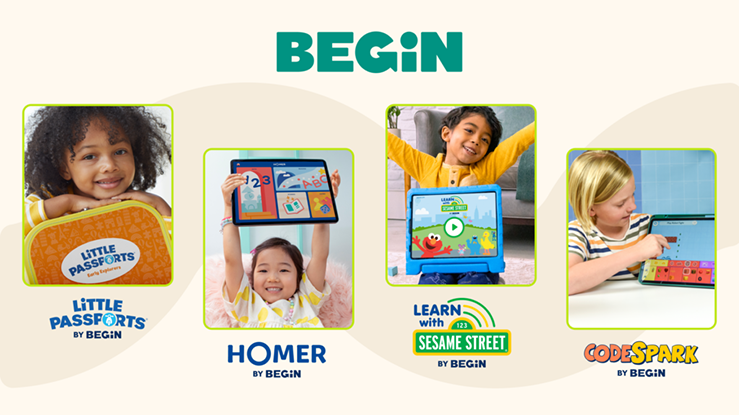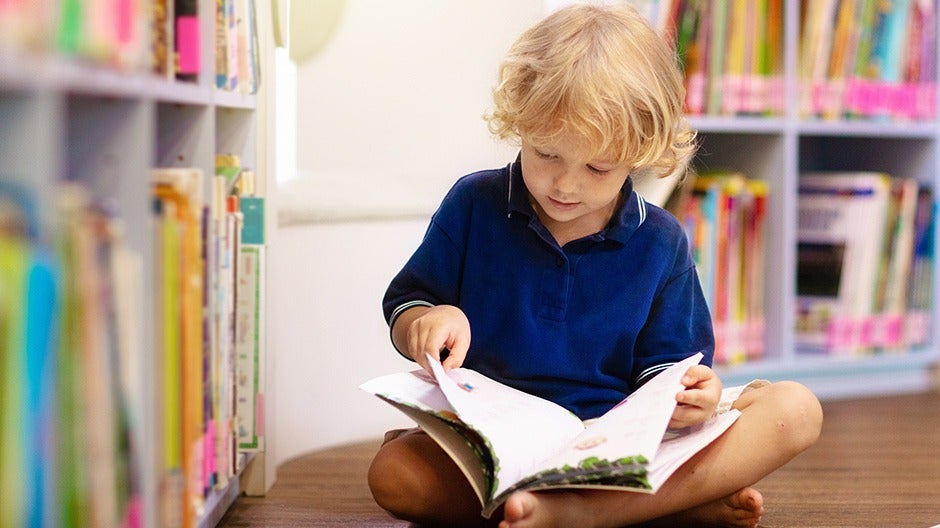Syllables are building blocks for words. They make it easier for us to break down and decode unfamiliar terms. But did you know there are different syllable types?
Each type has unique characteristics and provides valuable clues for reading and spelling. Understanding the six syllable types can help your child become a stronger reader and writer.
Let’s explore each type and see how they can improve your child’s literacy skills. But first, it’s essential to understand what a syllable is.
Table of Contents
- What Are Syllables?
- The 6 Syllable Types
- Why It’s Important to Teach Syllable Types
- Tips for Teaching Kids About Syllable Types
What Are Syllables?

A syllable is a unit of sound that forms part of a word. It contains one vowel sound, either alone or with other sounds.
By counting the number of vowel sounds in a word, you can tell how many syllables there are. Let’s look at a few examples:
- Dog: one vowel sound, one syllable (dog)
- Headphones: two vowel sounds, two syllables (head – phones)
- Elephant: three vowel sounds, three syllables (el-e-phant)
- Beautifully: four vowel sounds, four syllables (beau-ti-ful-ly)
As you can see from these words, the number of vowels in a word doesn’t matter because you’re counting vowel sounds. Often, two or more vowels work together to form one vowel sound. For example, the vowels e, a, and u make a single vowel sound in the word beautifully.
It’s important to remember that the letter y can sometimes be a vowel alongside a, e, i, o, and u. When y makes a vowel sound, it functions as a vowel. Otherwise, it’s considered a consonant.
For instance, in the word beautifully, the y makes the long e sound. Thus, it’s a vowel in that word. But in the word “beyond,” y is a consonant.
While this concept can initially confuse kids, counting vowel sounds in a word gets easier as they practice.
The 6 Syllable Types

Now that you know what a syllable is, it’s time to learn about the six different types of syllables.
1) Closed Syllables
A closed syllable has one vowel letter followed by one or more consonants. The vowel in a closed syllable is usually short.
Here are some examples:
- Cat
- Sock
- Band
- Cluck
2) Open Syllables
An open syllable ends with a long vowel sound. No consonants close in the vowel; it’s left open.
These words all have open syllables:
- Day
- Hi
- Me
- Go
- You
3) Vowel-Consonant-e Syllables
A vowel-consonant-e syllable has a silent e at the end. The e isn’t pronounced, but it changes the vowel before it into a long sound.
Let’s look at a few words with this pattern:
- Skate
- File
- Robe
- Tune
4) Vowel Team Syllables
Multiple vowels often join forces to produce one long vowel sound. These combinations are called vowel teams or vowel digraphs.
The English language has tons of vowel teams. Here are some common ones:
- Ai (rain)
- Ee (peel)
- Oa (boat)
- Oo (wood)
- Ey (they)
Each of those words in parenthesis is a one-syllable word with a vowel team syllable.
5) Consonant-le Syllables
This syllable type is harder for kids to identify, as its vowel sound isn’t as distinct. It’s known as a schwa sound, which is kind of like a mumbled short i or short u sound.
However, this type of syllable has some distinguishing features that make it easy to spot once you know what to look for.
Consonant-le syllables:
- Are always at the end of a word
- Contain exactly three letters (a consonant, an l, and the letter e)
- Always have a silent e
Here are some examples:
- Little
- Simple
- Candle
6) R-Controlled Syllables
The letter r can sometimes be bossy. When it follows a vowel in a word, it can change how it is pronounced.
For example, the word car looks like a simple, closed-syllable word. But when we say that word, we don’t pronounce the vowel sound like in cat. Instead, the r changes the way we say it.
This is known as an r-controlled syllable. When studying these, your child will come across five different r-controlled vowels:
- Ar (star)
- Er (her)
- Ir (bird)
- Or (fork)
- Ur (turn)
These syllables can be tricky for kids to learn. They’ll likely try to pronounce the vowel the “normal” way at first. But with practice, they’ll learn to recognize and correctly pronounce these bossy r words.
Why It’s Important to Teach Syllable Types

Whew, that was a lot of information about syllable types. And now you might wonder if your child needs to learn all of them. The answer is yes! Learning syllable types will help your child become a better reader and speller.
Here’s why:
- It helps with decoding: By understanding how different syllable types work, your child will be able to break down longer words into smaller, more manageable parts. This makes it easier for them to sound out and read unfamiliar words.
- It helps with spelling: Syllable knowledge makes it easier to spell words correctly. For instance, when you know how consonant + le syllables work, you’re less likely to leave off the silent e.
- It improves fluency: Breaking words into syllables can help improve reading fluency. It helps kids recognize common word patterns, allowing them to read more quickly and accurately.
So, while it may seem overwhelming at first, teaching syllable types is essential to your child’s literacy development.
When to Teach Syllable Types
Syllable lessons don’t occur all in one school year. It’s a complex topic that your child will come back to throughout the early elementary years.
At first, they may not learn the word syllable or the names of the syllable types. Instead, they’ll be introduced to the concept of syllables.
Typically, the first introduction occurs in kindergarten. Lessons will focus on simple, one-syllable words with closed syllables. These short vowel words are easier to sound out, making them perfect for young readers.
In first grade, long vowels become the priority. Your child will learn to read silent e words and recognize some basic vowel teams.
Second graders are ready for more in-depth lessons on syllables. They’ll learn to recognize more vowel teams and identify r-controlled syllables. They’ll also be introduced to consonant-le words.
By the end of third grade, your child will be expected to identify all six types of syllables and correctly divide words by their syllables.
Tips for Teaching Kids about Syllable Types

Now that you know more about syllables, here are some tips for teaching your child about them.
Start by Clapping the Syllables
One of the easiest ways to introduce syllables is by clapping them. Start with simple words and have your child clap as you say each syllable.
For example, the word cat has one syllable, so you’d clap once. The word caterpillar has four syllables, so you’d clap four times (cat/er/pil/lar).
If your child struggles to know when to clap, ask them to put their hand on their jaw as they say the word. They can count the number of times their jaw drops, which can be a helpful physical clue.
Make it Fun
Turn syllable lessons into a game to keep your child engaged.
Here are some ideas:
- Create a silly sentence and have your child clap out the syllables as they repeat it to you.
- Send them on a syllable scavenger hunt to gather items with one, two, and three syllables in their name.
- Get out the picture album and determine which family member has the most syllables in their name (and who has the fewest).
- Mix up the syllables in a word and ask your child to unscramble them and tell you the actual word (for example, ger-ti would be tiger and ca-tion-va would be vacation.)
- Practice reading multisyllabic words in the HOMER app and ask your child to clap out the syllables.
- Give your child a pile of building bricks and say a word. Have them connect a brick for each syllable in the word.
Encourage Practice
The more your child practices dividing words into syllables, the easier it’ll become. Encourage them to practice for a few minutes each day.
Here are some simple ways to get in extra practice:
- When reviewing spelling words for the week, clap out the syllables in each.
- If you’re reading aloud, pick one sentence to break down syllable by syllable.
- Have your child select five words from the book they’re reading to divide into syllables.
- Ask your child to identify the type of syllables in three different words.
Slow and steady practice leads to significant results when it comes to syllables.
Practice Syllables and More with Begin

Kids who can identify the six syllable types may have an easier time with reading and spelling. By introducing this concept in a fun and interactive way, you can set your child up for reading and writing success.
For even more engaging reading practice, check out the HOMER app. It’s screen time you can feel good about—in just 15 minutes a day, your child can improve their reading and learn new skills.
The HOMER app is personalized to your child’s needs, so each lesson and game is perfect for their age, interests, and skill level. Try it for free today!













